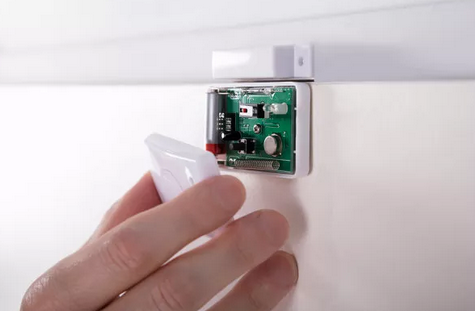

The inductive sensor is a device that uses the law of electromagnetic induction to realize non-electrical measurement through the change of the self-inductance and mutual inductance of the coil. It is characterized by the use of the physical characteristics of the inductance, which can measure displacement, vibration, pressure, flow and other signals without direct contact with the measured object.
According to the working principle, it is divided into three types: self-inductance, mutual inductance and eddy current.
1. Self-inductive sensor: A self-inductive inductive sensor is a sensor that changes the self-inductance coefficient. It consists of coil, iron core and armature. Between the iron core and the armature, there is an air gap δ and an air gap magnetic permeability cross-sectional area S0, which are two parameters that are easy to change.
The total reluctance of the magnetic circuit of the self-inductive sensor can be expressed as:
By changing the air gap or the magnetically conductive area of the air gap respectively, a variable air gap type self-inductance sensor and a variable area self-inductance sensor can be formed, and the structure diagrams are shown in Figures 1 and 2.
Using two opposite basic self-inductance sensors, a differential self-inductance sensor can be formed, as shown in Figure 3, which improves the electromagnetic effect of the basic self-inductance sensor, and doubles the sensitivity with the bridge, and the nonlinearity is also obtained. compensation.
2. Mutual inductance sensor: It consists of three parts: coil, iron core and movable armature, as shown in Figure 4. The coil consists of a primary coil and two secondary coils which are reversely connected. When the primary coil input AC excitation voltage, the secondary coil will generate induced electromotive force e1 and e2. Since the polarities of the two secondary coils are reversed, the output voltage of the sensor is the difference between the two, that is, ey=e1-e2.
3. Eddy current sensor: The sensor made according to the eddy current effect is called eddy current sensor. According to the penetration of the eddy current in the conductor, the sensor can be divided into two types: high-frequency reflection type and low-frequency transmission type, but the basic working principle is still similar. The biggest feature of the eddy current sensor is that it can perform non-contact continuous measurement of displacement, thickness, surface temperature, speed, stress, material damage, etc. In addition, it has the characteristics of small size, high sensitivity and wide frequency response, and is widely used.
As a position feedback element, inductive sensor has been widely used in almost all industrial fields of automation control, and plays a key role in the reliable operation of detection and automatic control systems.
The inductive sensor can also be used for magnetic speed switch, gear age bar speed measurement, sprocket tooth speed detection, etc. For example, the movement trajectory of the robot arm needs to be strictly controlled. The rotation speed and position of the gears in the arm are monitored to ensure the stable operation of the robotic arm. Speed detection of sprocket teeth, speed and distance detection of chain conveyor belt, gear age counting tachometer and control of automobile protection system, etc. In addition, this type of sensor can also be used in small object detection, object ejection control, wire break monitoring, small parts distinction, thickness detection and position control in the feeding pipe system.
Inductive sensors can also be used for speed and distance detection of chain conveyor belts, gear age counting tachometers and control of automobile protection systems. For example, when the truck is unloading, the position of the bucket must be limited, and the lifting range of the bucket can only be controlled to a certain limit. The use of proximity sensors can detect the lifting height of the bucket to control the hydraulic system to limit the position.
Inductive sensors can also be used in active measurement of grinding, measurement of length displacement, and production of electronic micrometers.







